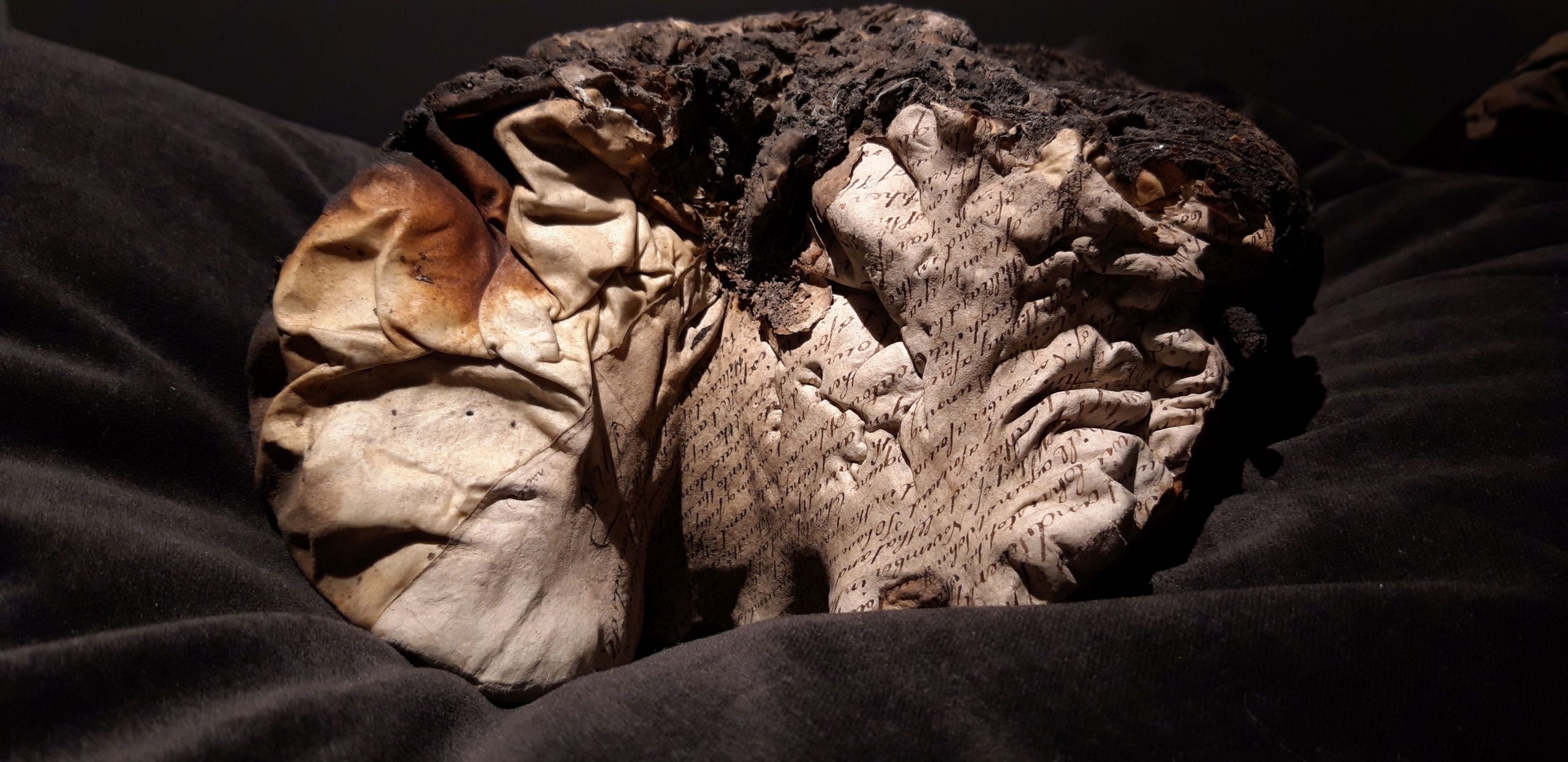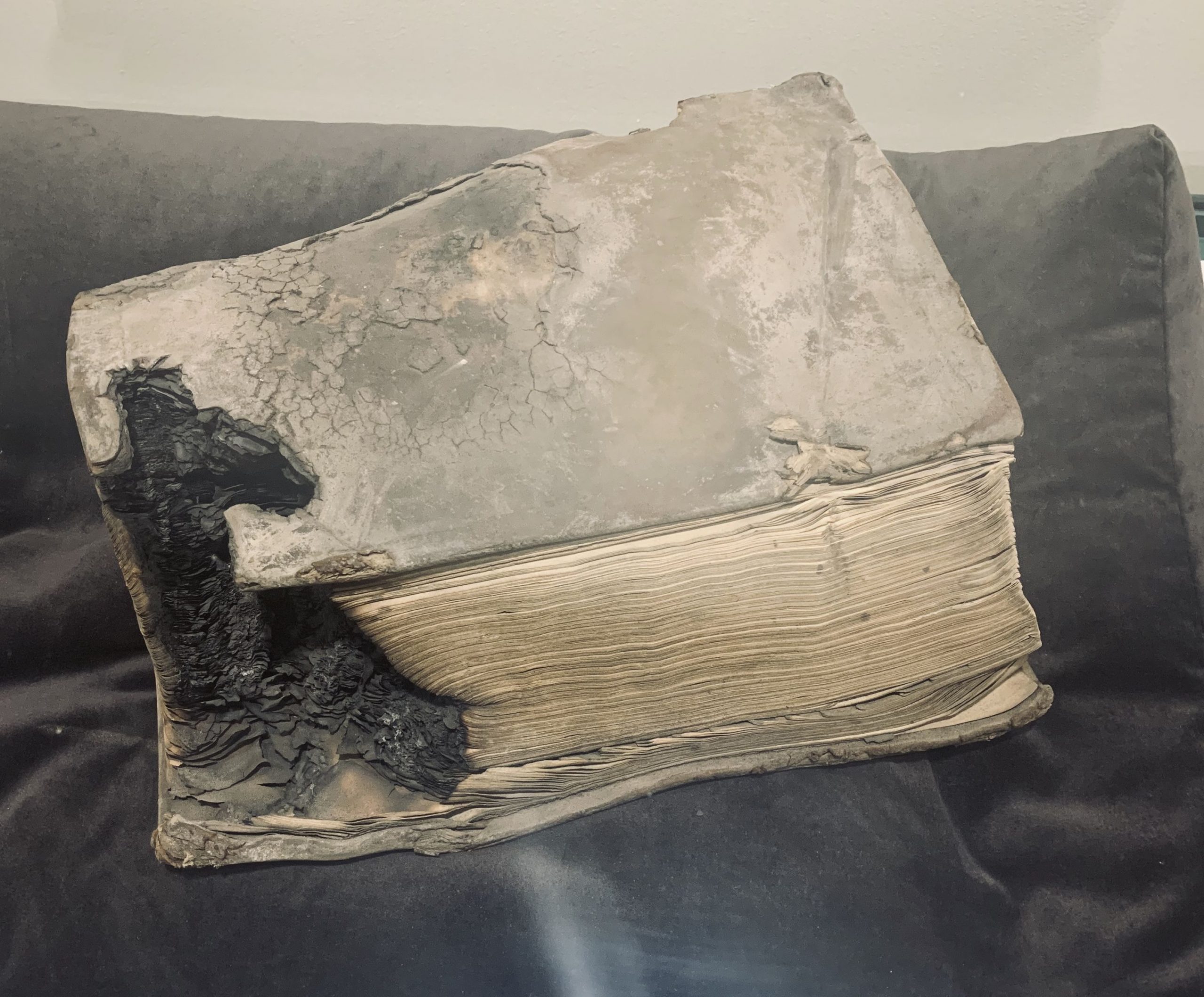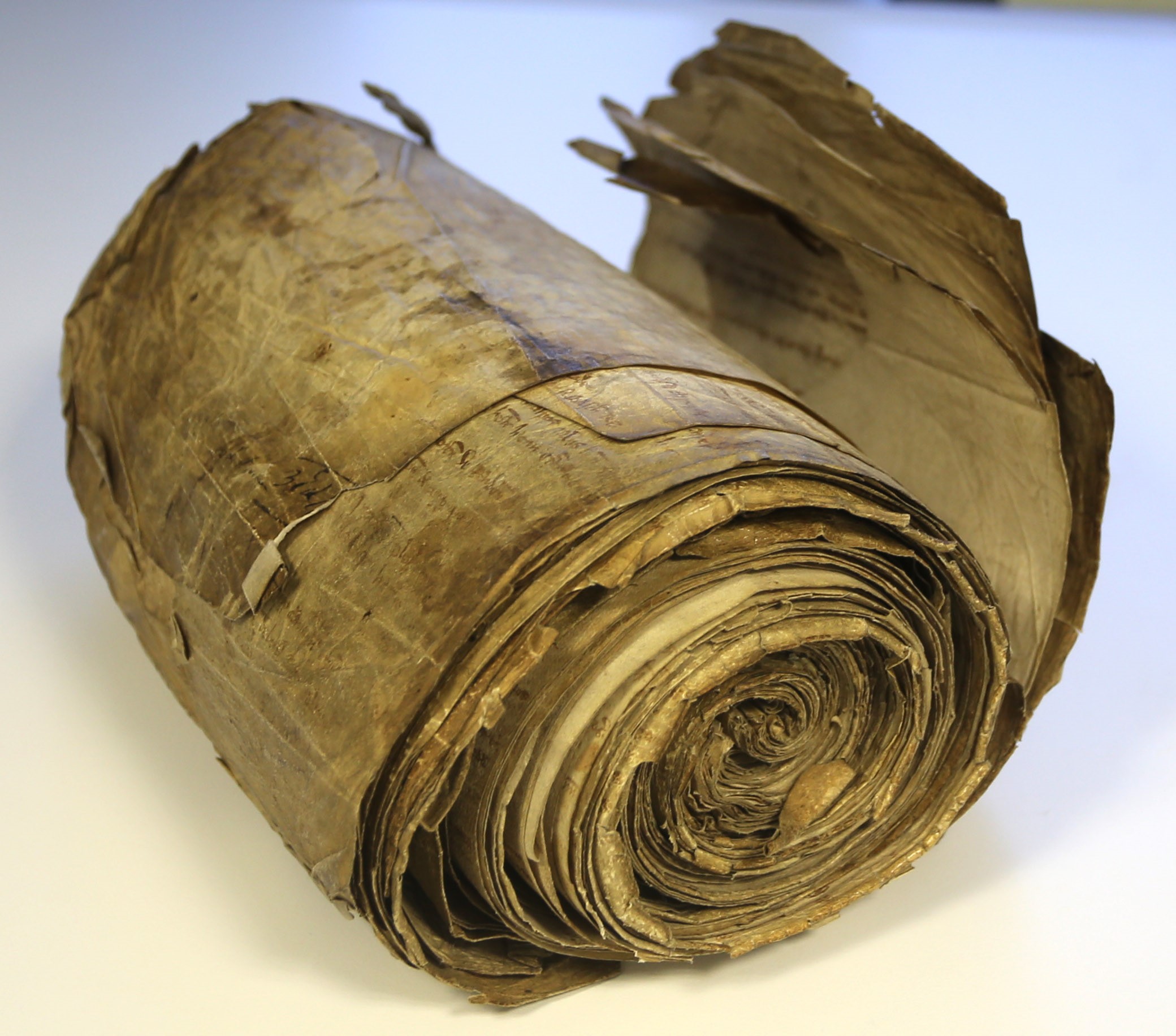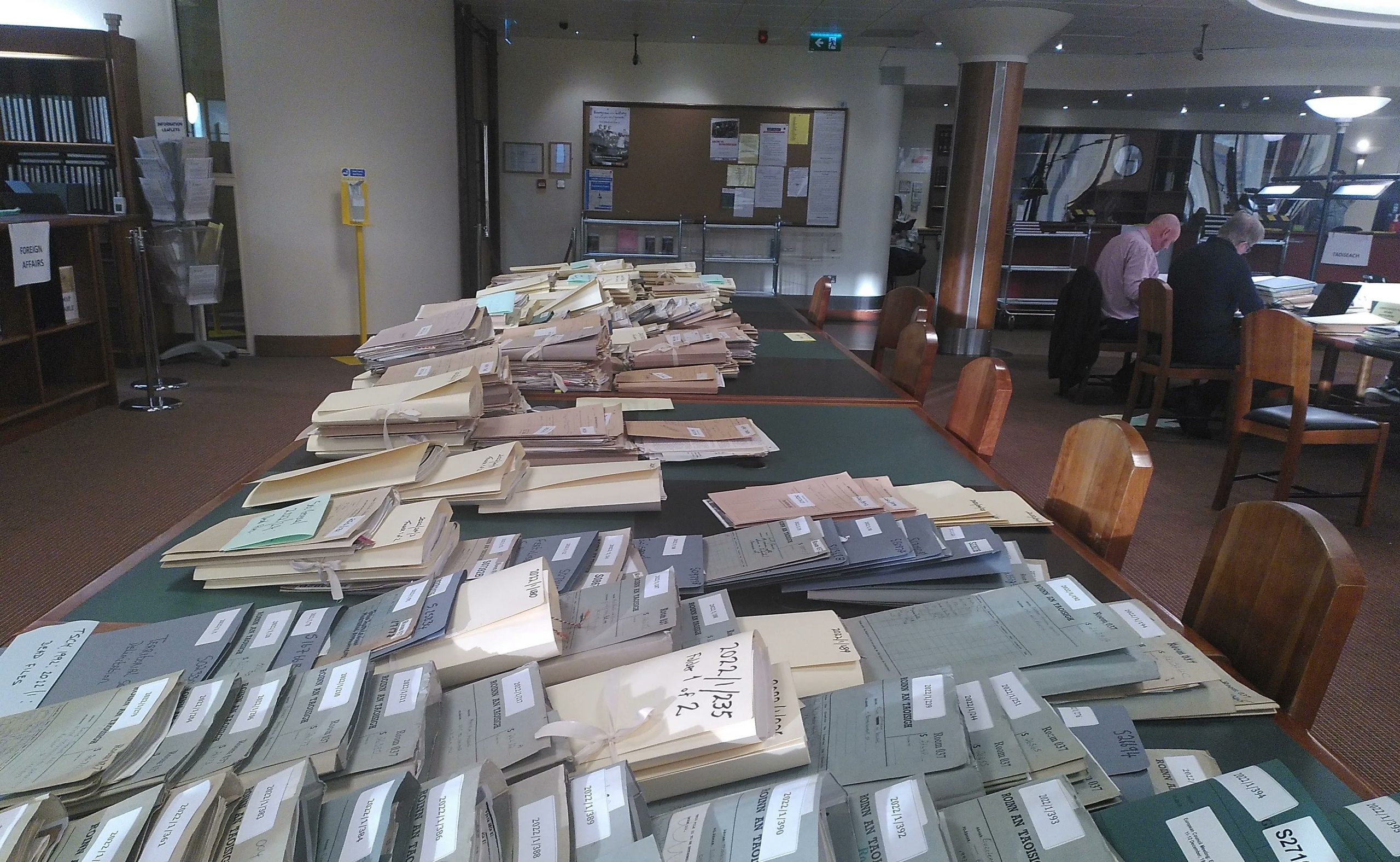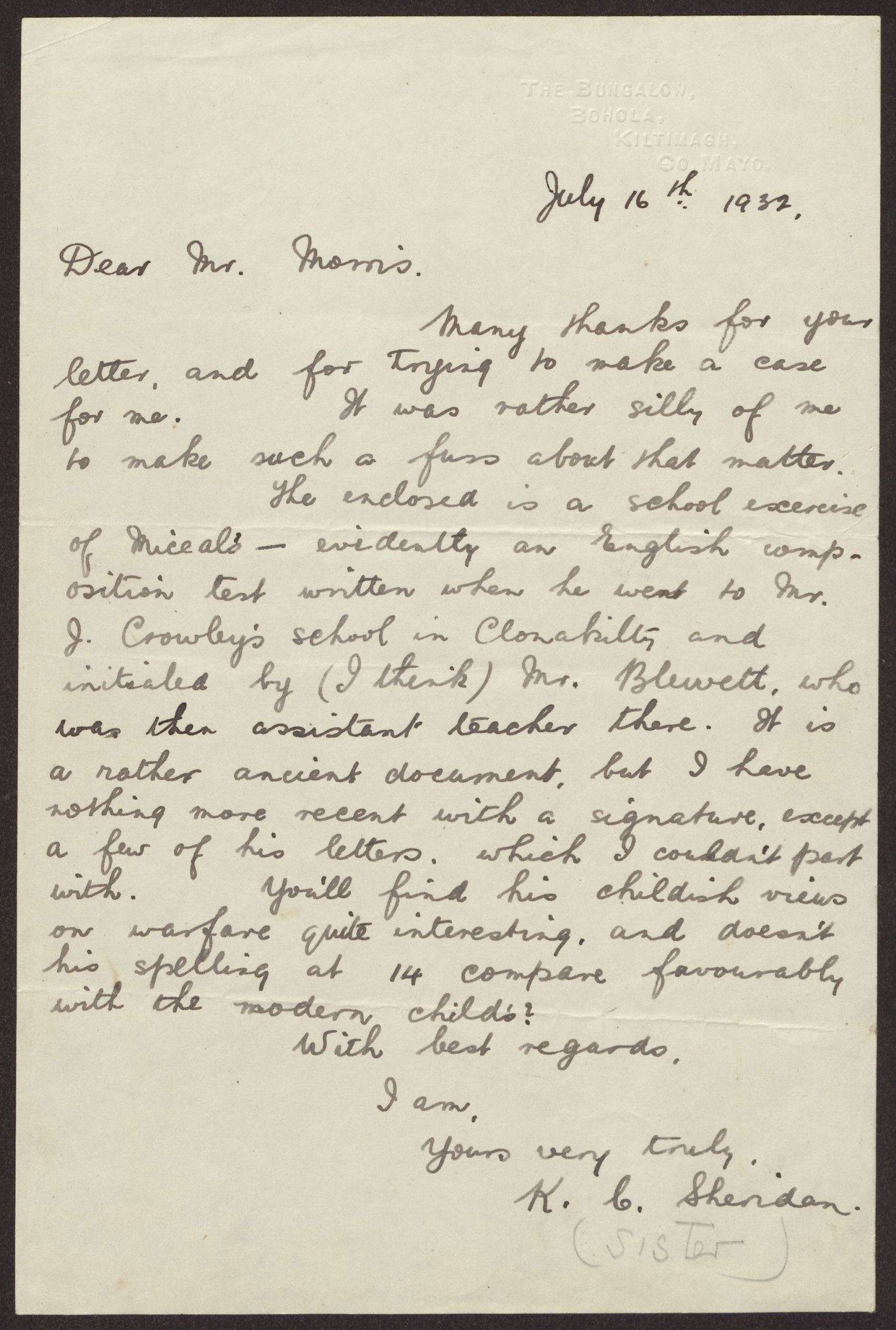July Document of the Month
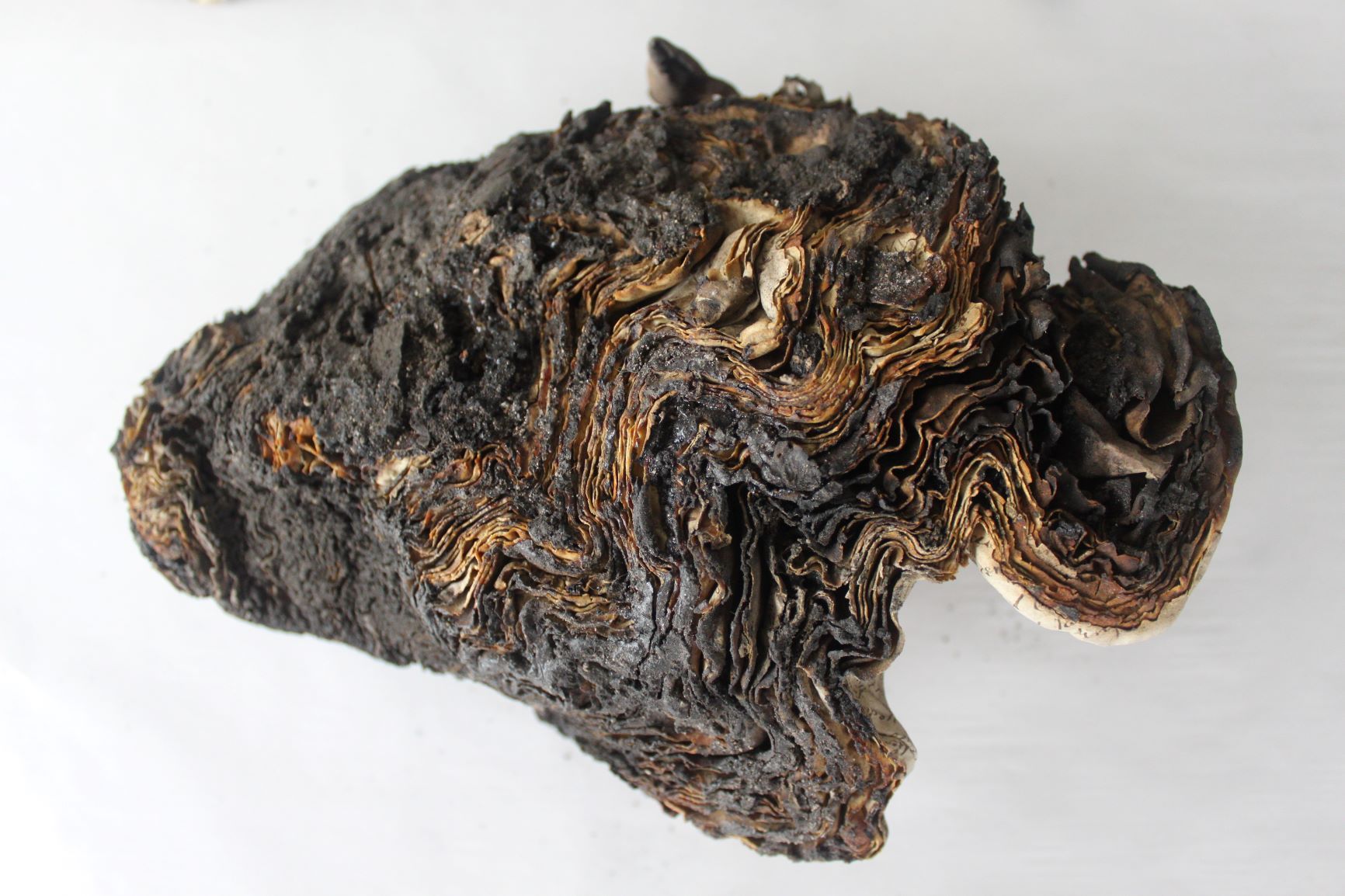
After the destruction of the Public Record Office on 30th June 1922, onsite salvage work began on 17 July and continued for nearly 12 months until 8 June 1923.
From information in the 55th Deputy Keepers Report that was published in 1928 the process seems to have been that PROI staff located items amongst the rubble, removed the bundles to a room in the Record Office, Dublin Castle. There the staff brushed off the building debris, worked together to identify what had been found and then wrapped the fire damaged documents in brown paper, the parcels were secured with string and given a label.
I always think about the staff working long dusty days, that it would have been dirty and challenging work, both sole destroying and poignant at the same time. There is a quote from the 56th Deputy Keeper’s Report where James Morrissey notes that it was ‘very tedious and difficult’ work. Yet, I am always struck by the care that was taken by the staff. These were neat parcels that did the job of protecting what was found, keeping the material inside secure and waiting for someone like me to come along.
In 2017 we were in the wonderful position to have received external funding from the Irish Manuscripts Commission to carry out a survey of those parcels which had remained unopened since they were wrapped up 95 years before. The scope of the survey was to open up the 1922 parcels and comprehensively for the first time see what was there and find out what condition it was in. Some parcels contained more parcels, some contained a single page, some parcels contained parchment rolls with a couple of hundred sheets therein. I think it is safe to say that no two parcels were the same. In total, the contents of 378 parcels were surveyed, everything was documented, photographed and given a numerical value depending on the condition it was found in.
The majority of documents that survived the fire had been written on parchment. That wasn’t too much of a surprise from my point of view; parchment, which is made from animal skin, is a really robust material which is why it was used for legal documents. Imagine the fire being like a really hot oven, the moisture is drawn out of the skin as it bakes and the internal structure of the skin changes and shrinks, it becomes distorted, loses the ability to be opened out and in some cases, especially where layers of the parchment had been rolled, they have become stuck together.
Additional salvaged material can currently be viewed in our display cases at the National Archives, Bishop Street.
by Zoë Reid, Senior Conservator
